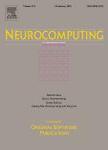版权所有:内蒙古大学图书馆 技术提供:维普资讯• 智图
内蒙古自治区呼和浩特市赛罕区大学西街235号 邮编: 010021

作者机构:Amirkabir Univ Technol Comp Engn & Informat Technol Dept Soft Comp Lab Tehran Iran
出 版 物:《NEUROCOMPUTING》 (神经计算)
年 卷 期:2016年第214卷
页 面:535-545页
核心收录:
学科分类:08[工学] 0812[工学-计算机科学与技术(可授工学、理学学位)]
主 题:Complex networks Community detection problem Learning automata (LA) Memetic algorithm (MA)
摘 要:Community structure is an important feature in complex networks which has great significant for organization of networks. The community detection is the process of partitioning the network into some communities in such a way that there exist many connections in the communities and few connections between them. In this paper a Michigan memetic algorithm;called MLAMA-Net;is proposed for solving the community detection problem. The proposed algorithm is an evolutionary algorithm in which each chromosome represents a part of the solution and the whole population represents the solution. In the proposed algorithm, the population of chromosomes is a network of chromosomes which is isomorphic to the input network. Each node has a chromosome and a learning automaton (LA). The chromosome represents the community of corresponding node and saves the histories of exploration. The learning automaton represents a meme and saves the histories of the exploitation. The proposed algorithm is a distributed algorithm in which each chromosome locally evolves by evolutionary operators and improves by a local search. By interacting with both the evolutionary operators and local search, our algorithm effectively detects the community structure in complex networks and solves the resolution limit problem of modularity optimization. To show the superiority of our proposed algorithm over the some well-known algorithms, several computer experiments have been conducted. The obtained results show MLAMA-Net is effective and efficient at detecting the community structure in complex networks. (C) 2016 Elsevier B.V. All rights reserved.